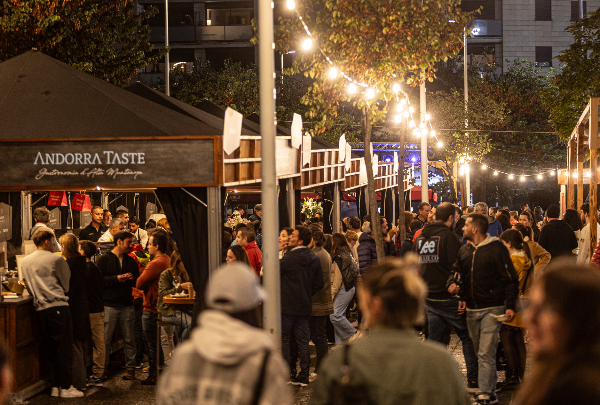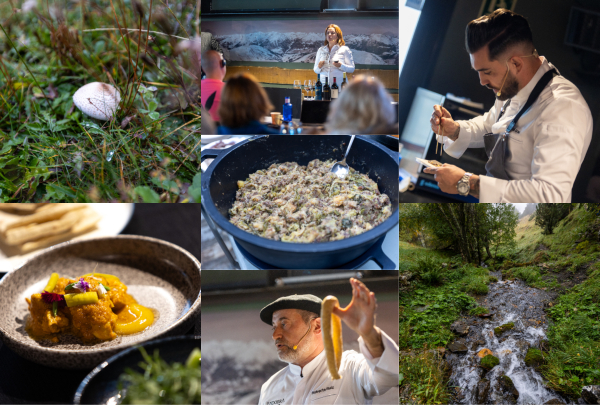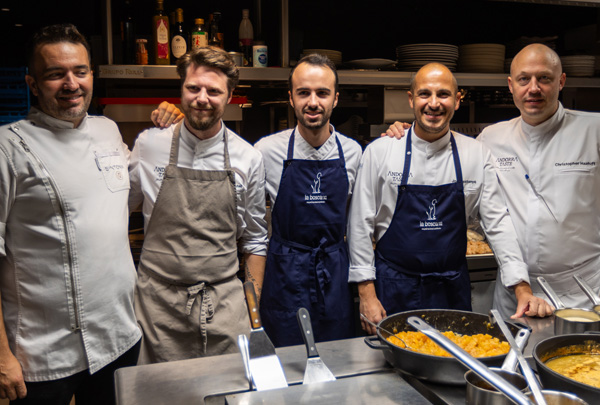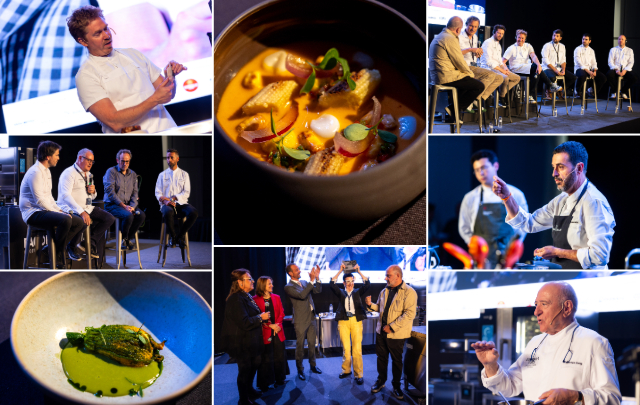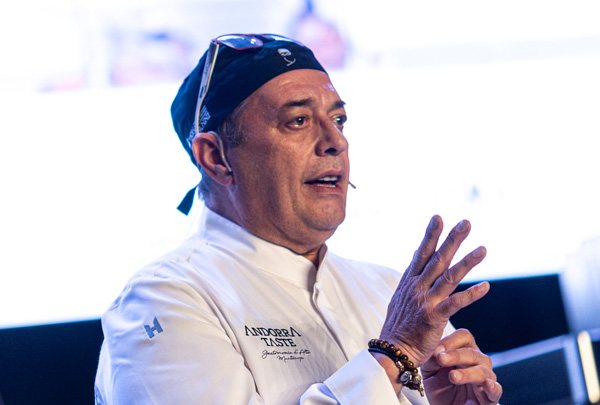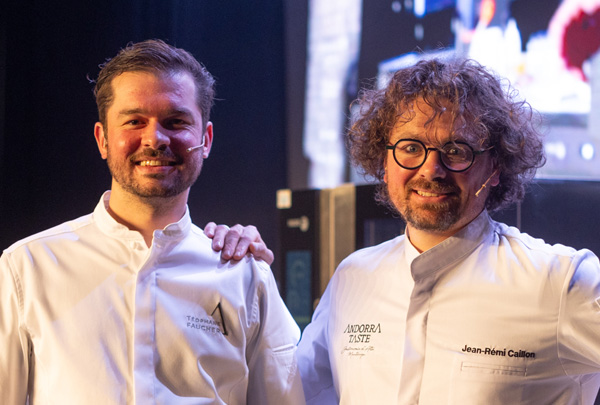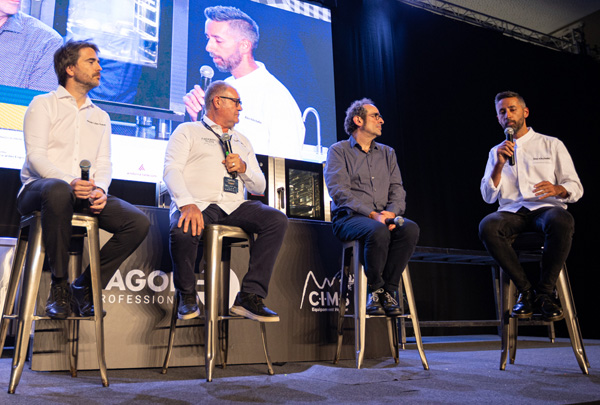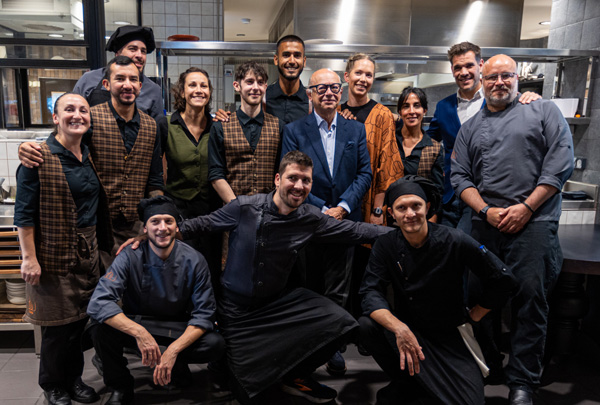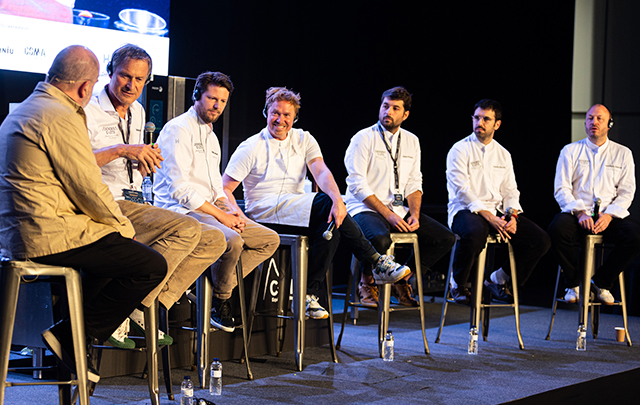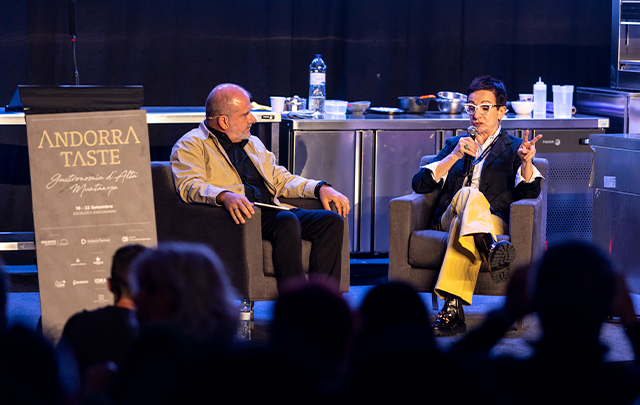News
How the territory defines the cuisine in West Norway
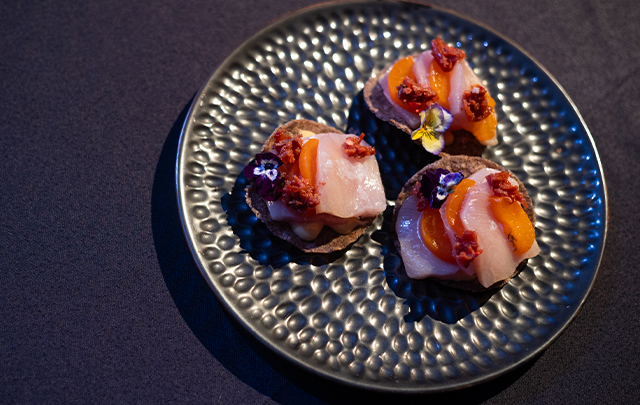
The cuisine of a place is the result of its unique characteristics, but knowing how to adapt to them in a sustainable way is the key to creating an interesting gastronomic culture.
Despite the distance that separates Norway from Andorra, chef Christopher Haatuft (Lysverket*, Bergen) began his presentation at Andorra Taste by highlighting the similarities between the two territories: "Andorra reminds me of my region, the western part of Norway, even though there is no sea or fjords here. Haatuft emphasised this link because, as he said, "the territory defines the cuisine of the place".
In this sense, the Norwegian chef explained all the conditioning factors that the Norwegian pantry imposes on his traditional cuisine. Because of the orography, the fjords, only 4% of our land can be cultivated, and we have to do it in steep areas and very close to the sea", explained Christopher, who added the problem of a meteorology that is basically a variable autumn with a lot of rain "that imposes a very short window for the production of vegetables, which are basically harvested in June and July".
As a result, "our grains are short to survive the wind and rain", and the larder also looks to the sea, with fish such as cod, herring and halibut. However, as the chef explained, 'we are not used to using the best parts of these fish, which are the ones we export', but rather they are traditionally dried, resulting in old, dried fish that 'to be honest, are not very good'.
Haatuft thus described what Norwegian cuisine has traditionally been, but his talk also focused on how the economic changes of the last century have led to the abandonment of the countryside for the city, and worse, "a lack of concern for the environment". Practices such as the imposition of monocultures or the creation of hydroelectric plants, "which have destroyed the rivers and the genetics of the land".
Haatuft was thus describing what Norwegian cuisine has traditionally been, but his talk also focused on how the economic changes of the last century have led to the abandonment of the countryside for the city and, worse still, 'a lack of concern for the environment'. Practices such as the imposition of monocultures or the creation of hydroelectric power stations "which have affected the rivers and the genetics of wild salmon" were some of the negative consequences of these changes, which "a new generation of farmers is now trying to reverse", the chef explained.
This new movement has also led to a greater appreciation of home-grown products. In Norway, unlike what can happen here with Iberian ham, where everyone can tell the difference between supermarket ham and a good product, we didn't have that awareness," says Christopher. Now, on the other hand, 'the work of the producer is valued and he develops the product to create an artisan and quality product'.
The key, according to the Norwegian, is to "accept change". Especially at a time like the present, when it is clear that we are going through many changes due to various environmental problems. Haatuft suggests 'using the changes in the most sustainable way possible and creating awareness of nature and the work of our local producers'.


